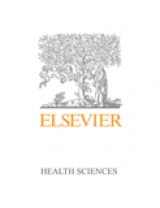Paramedic Principles and Practice ANZ: A clinical reasoning approach explores the principles of clinical practice for paramedics working in Australia and New Zealand today.
The text is an invaluable resource for both students and paramedics working in the emergency environment where critical decisions must be made quickly and confidently.
Organised into three sections - Paramedic Principles, Paramedic Practice and Essential Knowledge — this resource promotes an understanding of basic physiology, clinical decision making and application to practice. It emphasises the importance of professional attitudes and behaviours, clinical competence, teamwork and communication skills, equipping the reader with the skills required to become an effective paramedic.
Key Features
- ● First paramedic-specific text for Australia and New Zealand
- ● Evidence-based clinical decision-making model
- ● A wealth of detailed case studies that help bridge the gap from principles to practice
- ● More than 40 essential pathologies covering common paramedic call-outs
- ● Focus on the wellbeing of the patient and the paramedic
- ● Appendices comprising a professional role guide and medications commonly encountered in the paramedic setting
Author Information
By Hugh Grantham, ASM, MBBS FRACGP, Professor of Paramedicine, Flinders University, South Australia
Chapter 1 IntroductionPART 1 PARAMEDIC PRINCIPLESSECTION 1 Principles of paramedic practiceChapter 2 The paramedic role in healthcareChapter 3 Characteristics of ambulance patientsSECTION 2 THE PARAMEDIC’S CLINICAL APPROACHChapter 4 The structured clinical approachChapter 5 The clinical reasoning processCHAPTER 6 The patient interviewSECTION 3 PATIENT AND PARAMEDIC SAFETYChapter 7 Patient safety and paramedicineChapter 8 Paramedic health and wellbeingSECTION 4 PARAMEDIC EDUCATIONChapter 9 Paramedic educationSECTION 5 LEGAL AND ETHICAL CONSIDERATIONSChapter 10 Legal and ethical considerations in clinical decision makingSECTION 6 CLINICAL REASONING AND THE PARAMEDIC MODEL OF PRACTICEChapter 11 Developing a philosophy of practicePART 2 PARAMEDIC PRACTICESECTION 7 The paramedic approach to the patient in an altered conscious stateChapter 12 HypoglycaemiaChapter 13 Cerebrovascular accidentsChapter 14 OverdoseChapter 15 SeizuresSECTION 8 THE PARAMEDIC APPROACH TO THE PATIENT WITH RESPIRATORY DISTRESSChapter 16 Airway obstructionChapter 17 AsthmaChapter 18 Acute pulmonary oedemaChapter 19 Chronic obstructive pulmonary disease Chapter 20 PneumothoraxChapter 21 Pulmonary embolismChapter 22 Pleural effusionChapter 23 The paediatric patient with a noisy airway SECTION 9 THE PARAMEDIC APPROACH TO THE PATIENT WITH A CARDIAC EMERGENCYChapter 24 Chest painChapter 25 ArrhythmiasChapter 26 Cardiac arrestSECTION 10 THE PATIENT WITH A SEVERE ALLERGIC REACTIONChapter 27 AnaphylaxisSECTION 11 THE PARAMEDIC APPROACH TO THE PATIENT PRESENTING WITH PAINChapter 28 Pain Chapter 29 The patient with lower back painChapter 30 Renal colicSECTION 12 THE PARAMEDIC APPROACH TO THE PATIENT WITH TRAUMATIC INJURIESChapter 31 The structured clinical approach to trauma patientsChapter 32 Head injuryChapter 33 Chest injuriesChapter 34 Musculoskeletal injuriesChapter 35 Traumatic spinal injuriesChapter 36 The patient with burnsSECTION 13 THE PARAMEDIC APPROACH TO THE PATIENT WITH ENVIRONMENTAL INJURYChapter 37 HypothermiaChapter 38 HyperthermiaChapter 39 Decompression injuriesCHAPTER 40 Snake bites Chapter 41 Spider bites Chapter 42 Marine envenomationSECTION 14 THE PARAMEDIC APPROACH TO THE UNWELL PATIENT: SPECIFIC CHALLENGES TO PARAMEDIC REASONINGChapter 43 The patient with acute abdominal pain Chapter 44 The patient with sepsisChapter 45 Bleeding from the gastrointestinal or urinary tractSECTION 15 THE PARAMEDIC APPROACH TO THE COMPLEX PATIENTChapter 46 The socially isolated patient Chapter 47 The dying patientChapter 48 The patient on out-of-hospital dialysisChapter 49 Indigenous Australian patients Chapter 50 Māori patientsSECTION 16 THE PARAMEDIC APPROACH TO THE PATIENT DISPLAYING ABNORMAL BEHAVIOURChapter 51 The patient displaying abnormal behaviourChapter 52 De-escalation in the pre-hospital environmentSECTION 17 THE PARAMEDIC APPROACH TO OBSTETRIC AND NEONATAL EMERGENCIESChapter 53 Imminent birth Chapter 54 Neonatal resuscitation PART 3 ESSENTIAL: KNOWLEDGESECTION 18 Essential concepts of paramedic practiceChapter 55 Perfusion Chapter 56 The autonomic responseChapter 57 The inflammatory responseAppendix 1 Professional role guideAppendix 2 Medications commonly encountered in community emergency healthGlossary


